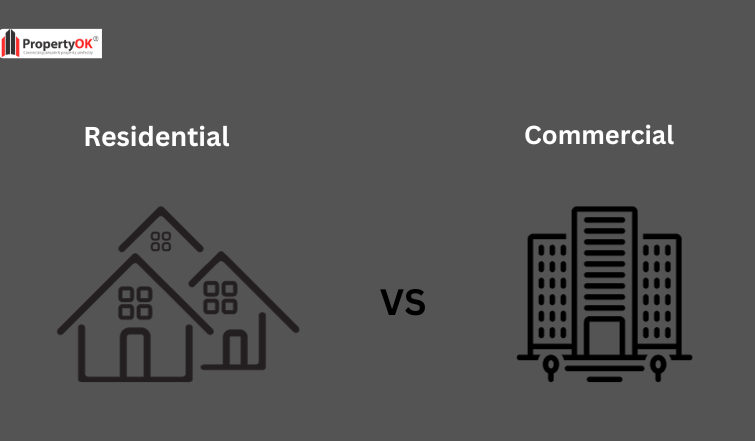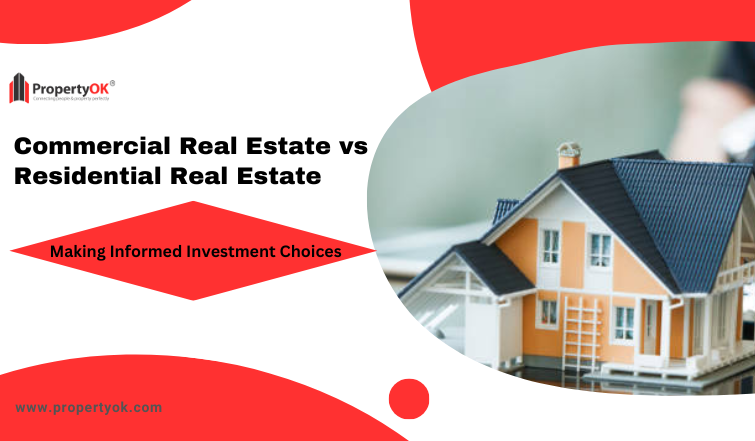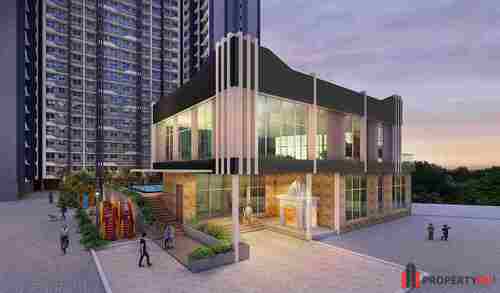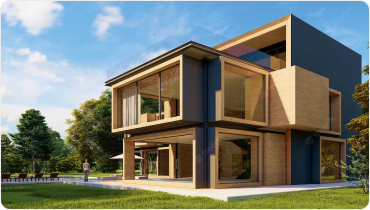Real estate is a diverse investment arena, offering many opportunities for individuals looking to grow their wealth. Two primary categories within this field are commercial real estate and residential real estate. While both have merits, they cater to different investment objectives, risk appetites, and strategies.
In this blog, we will explore the key differences between commercial real estate vs residential real estate investments and help you make informed choices for your portfolio.
Looking for expert advice on the current real estate market? Get in touch with us now!

Understanding Commercial Property vs Residential Property
To embark on a journey of successful real estate investing, it’s paramount to comprehend the fundamental distinctions between commercial and residential properties. These categories represent two facets of the real estate market, each with unique characteristics and purposes.
Commercial Properties
Commercial real estate spans a diverse spectrum, encompassing various spaces tailored for commercial activities. This includes office buildings where businesses conduct their operations, retail centres where shoppers flock for their needs, and industrial complexes housing manufacturing and distribution facilities. Additionally, it extends to specialized properties like warehouses, hotels, and healthcare facilities. The defining feature of commercial properties is that they are primarily intended for conducting business. They serve as the beating heart of the economy, facilitating commerce, trade, and industry.
Residential Properties
On the flip side, residential real estate is the domain of homes, apartments, and other spaces where individuals and families make their abode. Residential properties are designed and structured with the comfort and well-being of residents in mind. These spaces provide shelter, comfort, and a sense of “home.” Residential properties can range from single-family homes to multifamily apartment complexes and condominiums. The primary purpose of residential properties is to provide a place for people to live, rest, and build their lives.

Commercial vs Residential Real Estate Investing: Objectives and Returns
When venturing into real estate investment, one of the pivotal decisions you’ll face is whether to dive into commercial or residential properties. To make this decision effectively, aligning your investment objectives with the inherent characteristics and returns associated with each type of property is essential.
Commercial Properties
Commercial real estate investments often prove attractive for investors seeking stable and substantial income streams. This is primarily due to higher rental yields, the rental income generated from the property as a percentage of its total value. Commercial properties typically feature long-term lease agreements, which can stretch for several years, often with built-in annual rent escalations. This translates to reliable and predictable income for investors. Furthermore, these leases are commonly shouldered by businesses or corporations, offering a level of professional stability that can be appealing.
Residential Properties
Conversely, residential real estate is known for its different set of advantages. While rental yields might be lower than their commercial counterparts, residential properties offer liquidity and the potential for appreciation. The residential rental market is often more dynamic, allowing for shorter lease terms and the ability to adjust rent rates more frequently. The appreciation potential is tied to the property’s location, surrounding infrastructure, and overall housing market trends. Residential real estate investors often look to benefit from property value appreciation over time.
Your choice between commercial and residential real estate investments should be intimately linked to your financial goals and risk tolerance. Commercial properties may be your preferred avenue for a steady and substantial income stream. On the other hand, if you’re willing to trade some income stability for the potential of capital growth and flexibility, residential properties may align better with your investment objectives. Assessing your priorities and understanding the returns associated with each type will guide you toward the path that suits you best.

Difference Between Residential Property and Commercial Property
Distinguishing between residential and commercial properties extends beyond their intended use; it encompasses several crucial factors that shape the investment landscape in distinct ways. Understanding these differences is essential for prospective real estate investors seeking to make informed decisions.
1. Lease Duration: Commercial properties often feature longer lease durations than residential properties. Businesses prefer stable, long-term agreements, and these leases can extend for several years, ensuring consistent income for investors. In contrast, residential properties typically have shorter lease terms, varying from six months to a year. This dynamic nature of residential leases allows landlords to adjust rental rates and terms more frequently, resulting in more significant turnover.
2. Maintenance Costs: Maintenance costs also diverge between the two. Commercial properties generally require more extensive maintenance, as businesses often have specific space requirements and may customize the property to suit their needs. Residential properties tend to have lower maintenance costs since they cater to standard living needs, and tenants may not demand the same level of customization.
3. Economic Sensitivity: Commercial properties are highly sensitive to economic conditions and market trends. Economic downturns can lead to business closures and reduced demand for commercial space. In contrast, residential properties are more closely tied to local housing demand and demographic changes. Residential real estate can exhibit more stability during economic fluctuations because people will always need places to live.
Read this blog to know about Pre Leased Commercial Property:
UNLOCKING PASSIVE INCOME: THE POWER OF PRE LEASED COMMERCIAL PROPERTY
Commercial Real Estate: Pros and Cons
Pros
1. Higher Income Potential: Commercial properties typically yield higher rents, offering substantial and consistent income due to long leases.
2. Longer Lease Terms: Extended leases provide stability, reducing the risk of vacancies and ensuring a steady cash flow.
3. Professional Tenants: Business and professional tenants contribute to a more business-like landlord-tenant relationship, often maintaining the property well.
4. Diverse Investment Opportunities: Commercial real estate includes various property types, allowing for diverse investment options tailored to investors’ interests and expertise.
Cons
1. Complex Property Management: Managing commercial properties can be demanding due to specific tenant needs and customization requirements.
2. Tenant Turnover: Finding new tenants for specialized commercial spaces can be time-consuming and expensive.
3. Market Volatility: Commercial real estate is sensitive to economic fluctuations, requiring vigilance regarding market trends.
4. Higher Entry Costs: Acquiring commercial real estate demands a substantial initial investment, which may be less accessible for some investors due to higher costs.
Read this blog to know about luxury Real Estate in India:
LUXURY REAL ESTATE IN INDIA: A GLIMPSE INTO OPULENCE AND EXTRAVAGANCE
Residential Real Estate: Pros and Cons
Residential real estate offers distinct advantages and drawbacks, making it a popular choice for many investors. Here’s an in-depth look at the pros and cons of residential real estate:
Pros
1. Stability and Constant Demand: Residential properties benefit from the ever-present need for housing. The consistent demand for homes provides investors with a stable and reliable income source.
2. Accessible for Beginners: Residential real estate is often considered a more accessible and straightforward investment. Understanding and managing residential properties is typically less complex, making it an attractive option for those new to real estate investment.
3. Potential for Appreciation: Residential properties, particularly those in desirable locations, can appreciate over time. This can lead to capital growth and increased equity for investors.
4. Flexibility: Residential properties offer flexibility in terms of lease duration, allowing landlords to adapt to changing market conditions and tenant needs more easily.
Cons
1. Lower Rental Yields: Residential properties provide stability but often yield lower rental income than commercial properties. This can impact the overall return on investment.
2. Frequent Turnover: Residential properties tend to have shorter lease terms, which means more frequent tenant turnover. High turnover can lead to costs of finding new tenants and potential vacancies.
3. Market Sensitivity: Residential real estate is closely tied to local housing demand and demographic changes. Economic fluctuations and local market dynamics can impact the rental market, requiring investors to stay attuned to these changes.
4. Property Management Challenges: Dealing with residential tenants may involve more intensive property management, especially in multifamily or high-turnover properties, which can be demanding for landlords.

Balancing Your Portfolio: Mixing Commercial and Residential Real Estate
Creating a diversified real estate investment portfolio by incorporating commercial and residential properties can be a savvy strategy for investors seeking to optimize returns while managing risk. This approach allows you to harness the unique strengths of each property type, effectively balancing income stability and growth potential within your portfolio.
Income Stability
Residential properties often provide a stable income stream due to the constant demand for housing. They tend to offer predictable cash flow, even during economic downturns, making them reliable contributors to your overall revenue. This income stability can help cover operational expenses and provide a steady source of funds.
Growth Potential
Commercial properties, on the other hand, offer significant growth potential. Their higher rental yields and potential for appreciation can lead to capital growth. This diversification allows your portfolio to benefit from the development of businesses and industries, potentially increasing your property’s value over time.
However, finding the right balance between commercial and residential properties is crucial. Overloading on one property type may expose your portfolio to excessive risk. Conversely, a balanced mix can help safeguard your investments during market fluctuations, ensuring that the income from residential properties helps support the potential growth from commercial properties.
Read this blog to get ultimate guide for First-Time Home Buyers:
HOME BUYING: THE ULTIMATE GUIDE FOR FIRST-TIME HOME BUYERS
Wrap-up
The choice between commercial and residential properties in real estate investing depends on your financial goals, risk tolerance, and investment horizon. Commercial real estate offers potentially higher returns but comes with increased complexity, while residential real estate provides stability but may have lower yields. Carefully assess your objectives and consider diversifying your portfolio to strike a balance that aligns with your investment strategy.
In conclusion, understanding the nuances of commercial and residential real estate is crucial for making informed investment decisions. Making informed investment choices is crucial for commercial or residential real estate. For more insights and property options, visit our website. These platforms provide information about available flats, real estate market trends, and various real estate-related articles to help you stay informed and make well-rounded decisions for your investment journey. Explore these resources further to enhance your understanding of the real estate landscape and ensure you’re on the right path to achieving your investment goals.
Frequently Asked Questions
1. What are the typical lease terms for commercial and residential properties?
Commercial leases often span several years, offering stability, while residential leases are typically shorter, allowing for more flexibility and adjustment to market conditions.
2. Which type of property is less risky for beginners?
Residential properties are often considered less complex and more accessible for beginners due to their straightforward nature and lower entry costs.
3. Can I mix commercial and residential properties in my investment portfolio?
Yes, many investors choose to balance their portfolios with both property types to diversify risk. This approach can provide income stability from residential properties and growth potential from commercial properties.

 Thank You
Thank You




